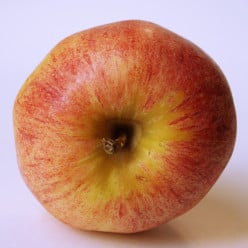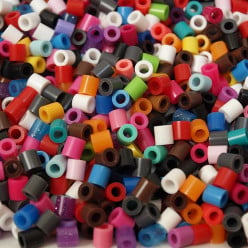Feed Back Required from HP on Best Placement of First Image on Page
In the past there was a lot of debate about whether the first image should be placed right at the top of the page (favored by Paul E). Should the images be full size or shifted to the right column? With the old layout some juggling of the amount of text in the top capsule was required to adjust the position of the ad that used to appear in the text. The new layout has changed everything. Some feedback advice from HP would be useful on their recommendations.
The issues are:
=> Balancing the amount of text above the fold with the space taken up with ads and images
=> Inspiring the reader with a provocative image so that they want to read on, scrolling down the page
=> Encouraging readers to pin the images on Pinterest
=> Getting the right balance and providing an introductory paragraph to explain what the hub is about. How much is enough? How is this aim for an introduction affected by the size and placement of the first image on the page.
=> Best practice on the use of captions within images
=> Full-size of half-size images in the right column
Can HP please provide some feed back, updates and recommendations from their vast stats and experience?
=> Hoe does image size and placement affect engagement, dwell time and reader satisfaction? + other metricsAs far as I'm aware, HubPages' official position is that everything should be full-width now - due to their inability to create a proper mobile layout.
Personally I disagree and still use right-floated capsules - however it's important to be aware that a right-floated capsule will become full-width ABOVE its related text on a smaller device, which may not always make sense.
I also disagree with the "hero shot" (full-width photo) at the top of a Hub. The concept comes from businesses who are trying to sell a product or service on their website, and research has shown that a great photo of that product or service is an effective "hook" to grab the reader. So, a hero shot will work if the Hub is about a product or other subject where you can encapsulate the subject in a top quality, engaging photo. It won't work if the reader is looking for a solution to a problem and the photo doesn't provide the solution.
For instance, if someone is looking for instructions on how to fish for trout, a photo of someone holding a big fat trout will show you know how to do it - a photo of your family having fun on a fishing trip will make you look like an amateur.
I'd have thought captions were essential and need to include keywords, since there is still no way to add alt tags.I finally decided not to fight all of the rules about this and began, sometime back, beginning each hub with an introduction that is followed either with a full or right spaced photo that is made for Pinterest. This way I get all of my keywords in right at the beginning and leave plenty of space for Google ads and also fulfill the text above the fold rules. Works pretty good for me and makes writing hubs a lot easier.
I'm still starting my hubs with a related image, full center, usually with caption, right after my summary before the first paragraph of my hub. I'll probably never change that, nor am I saying this is the best practice, but I have read others' hubs because I was enticed by the image more than the title. ~~~
Remember that your summary is not visible to readers, so you are actually starting your Hub with a full-width image.
I also start a hub with a full size image.
The summary is visible in the search engines immediately below the title linked to the URL. So potential readers do see the summary before even getting to the hub.
Related Discussions
- 16
Recommended width of photos and videos
by SmartAndFun 7 years ago
Apologies in advance for asking a question I should know the answer to, but I just can't keep track anymore, and the search function is not yielding any helpful results.When writing new hubs or updating old ones, is it now recommended to place photos and videos so they take up the full width of the...
- 27
One of my least visited hubs - what's wrong?
by Edweirdo 14 years ago
I'm pretty new at this, so I can really only gauge my hubs' performance against one another!This one is one of my earliest hubs, yet it has fewer views than ones that I've published just a few days ago.http://hubpages.com/hub/How-To-Choose-T … k-CookwareGranted, it's only been 3 weeks, but...
- 22
Can't upload background picture on new profile.
by Nicoli Clause 11 years ago
I've tried several differen't pictures but I keep getting the same message:Sorry, We cannot process the image you tried to upload. Please try a different file.The images are JPEG's Dimension circa 1600 x 1200, 422 KB. Has anyone else had this problem or knows how to fix it?
- 56
4 Ways HP/Maven/Arena Could Increase Traffic & Earnings
by Andrew Spacey 15 months ago
1. Change ad placements so they don't interrupt the text. Place ads to one or either side of the text.2. Get rid of Recommended For You ads currently at the bottom of articles. They are undermining the whole site.3. Encourage more transparent dialogue between writers and the HP team. Exchange of...
- 11
One of my Hubs has one page view today, but 14 slideshow views. Does that make s
by Rebecca 11 years ago
One of my Hubs has one page view today, but 14 slideshow views. Does that make sense?
- 23
Profile page thumbnail photos
by Catherine Giordano 8 years ago
I spend endless hours maybe two months ago redesigning my first photo so they would look good on the thumbnails on the profile pages and also on facebook. The latest change has made all that work a waste.A few of the thumbnails look better, but most now look off-kilter and have the text cut off. I...










